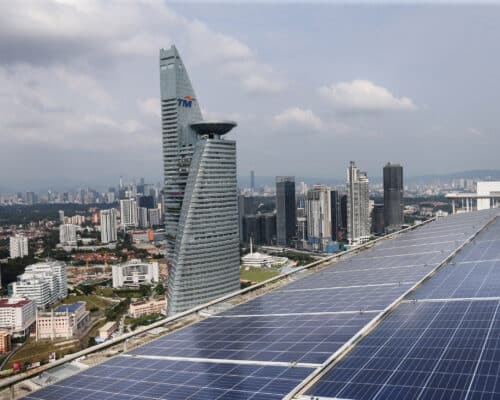Accelerating Electric Cars in the Philippines in 2025
Source: PIDS
31 October 2024 – by Eric Koons
A revolution in sustainable transportation is sweeping across the world, and projections show the share of electric cars will grow in the Philippines during 2025. This growth is partially due to the country’s supportive policies toward the adoption of electric vehicles (EVs).
One of the critical pieces of legislation is the Electric Vehicle Industry Development Act (EVIDA) of 2022, which established a roadmap for the EV industry to accelerate the development and use of latest electric cars. It provides financial and non-financial incentives for companies involved in manufacturing EVs and charging stations while giving purchasers tax breaks.
This policy is a crucial part of the country’s decarbonisation progress. It supports the Philippines’ broader goal to reduce fuel consumption and reduce greenhouse gas emissions by 75% by 2030 as part of the country’s Nationally Determined Contributions (NDCs).
Key Benefits of Electric Vehicles For the Philippines
Environmental Impact
EVs significantly reduce greenhouse gas emissions and air pollutants. In urban areas like Metro Manila, where air quality is a pressing concern, transportation alone accounts for 56% of outdoor air pollution. EVs do not produce air pollution and have zero tailpipe greenhouse gas emissions.

Furthermore, the amount of lifetime carbon emissions of EVs is 54% less than standard internal combustion (ICE) vehicles. The transportation sector produced over 35 million tonnes of carbon dioxide in 2022, accounting for over 20% of the country’s total emissions. By transitioning to EVs, the Philippines can make substantial progress towards its NDCs and tackle one of its largest environmental issues.
Economic Advantages
For consumers, EVs offer a lower total ownership cost. First, EV maintenance costs are around 50% less than ICE vehicles and have a similar lifespan. Second, vehicle owners are not reliant on volatile gasoline prices and can instead rely on more stable electricity prices.
On a national scale, reducing oil imports – which account for over 90% of the Philippines’ oil reserves – can improve the trade balance and the country’s energy security.
Energy Efficiency
EVs reduce reliance on fossil fuels and increase domestic electricity demand. This will promote local renewable energy generation from solar, wind and geothermal sources. The Philippines is rich in these resources and is actively working to increase its capacity.
Current State of Electric Cars in the Philippines
As of 2023, there are over 16,000 registered electric vehicles in the Philippines. This number accounts for less than 0.1% of the country’s total registered vehicles, which exceeds 13 million. While EVs currently represent a small fraction of the overall vehicle population, the growth trajectory is encouraging. EV registrations increased by 50% from 2022 to 2023. The growth of electric cars in the Philippines is expected to expand in 2025 and beyond.
This surge indicates rising consumer interest and the acceptance of electric vehicles. Factors contributing to this trend include increased environmental awareness, government incentives and the introduction of more affordable EV models. Moreover, a Frost & Sullivan survey revealed that 45% of Filipino car drivers are considering an EV as their next vehicle purchase.
However, key obstacles include limited charging infrastructure, higher upfront costs and a lack of widespread public awareness. Addressing these challenges is crucial for accelerating EV adoption.
Charging Stations
As mentioned, one of the main challenges is the lack of EV charging infrastructure. There are currently only 592 EV charging stations in the country.

Expanding charging stations is a two-part effort that relies on both the government and private sector. The EVIDA program provides some incentives for charging station developers, but not nearly enough. It’s a chicken and egg problem. Without enough EVs on the road, it’s not financially viable for developers to build EV chargers. However, without EV chargers, it’s not reasonable for consumers to purchase EVs.
The government must increase its incentives and be willing to be directly involved in charger development. Government and private sector partnerships are critical to driving EV adoption.
Leading EV Companies in the Philippines
With that being said, several major players are aiming to capitalise on the Philippines’ growing EV market.
BYD
BYD is China’s largest EV company and has expanded into the Philippine market. Through September 2024, BYD accounted for over 70% of EV sales in the country. This is primarily driven by the company’s new Atto 3 model, which is BYD’s affordable, small SUV and accounted for over 44% of all new EV sales.
BYD has also tapped into the government sector by providing fleet vehicles. For example, it sold Manila Electric Company a fleet of EVs in 2022.
Toyota
Toyota dominates the Philippine automotive market as a whole, with over 40% of total vehicle sales. In the market, Toyota has a significant presence through its hybrid electric vehicles, yet falls behind BYD in full EVs.
Toyota Motor Philippines plans to expand its electrified lineup by introducing more hybrid and fully electric models by 2025, aligning with the government’s push for sustainable transportation. The company is also collaborating with local partners to develop EV infrastructure.
EV Projection in the Philippines
With government incentives and an expanding market, electric car adoption in the Philippines is projected to continue growth in 2025. This growth will drive forecasts that suggest there could be 6.6 million EVs on the road by 2030. This is critical to meeting the country’s goal of having EVs account for at least 50% of all vehicles by 2040.

Driving the Future Forward: What the Philippines Must Do to Meet Its EV Goals
To achieve its EV goals and drive local adoption, the Philippines needs to intensify efforts on multiple fronts. Enhancing government support is crucial. This includes increasing financial incentives for consumers and manufacturers, investing more heavily in charging infrastructure and providing subsidies to lower the upfront costs of EVs.
Public-private partnerships should be strengthened to accelerate the development of charging stations across the country, addressing the “chicken and egg” problem of infrastructure and demand. Public awareness campaigns are essential to educate citizens about the benefits of EVs, both economically and environmentally.
by Eric Koons
Eric is a passionate environmental advocate that believes renewable energy is a key piece in meeting the world’s growing energy demands. He received an environmental science degree from the University of California and has worked to promote environmentally and socially sustainable practices since. Eric’s expertise extends across the environmental field, yet he maintains a strong focus on renewable energy. His work has been featured by leading environmental organizations, such as World Resources Institute and Hitachi ABB Power Grids.
Read more








